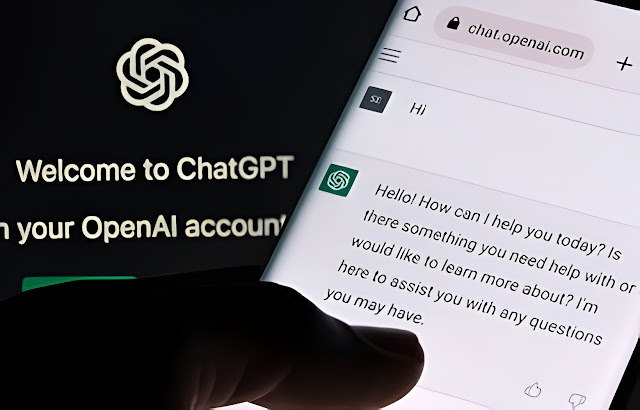Artificial intelligence (AI) has emerged as a transformative force in today's rapidly evolving digital landscape, driving innovation across industries. One of the most notable advancements in AI is the development of language models, particularly ChatGPT, which has revolutionized how we interact with machines. This guide will provide you with an in-depth understanding of ChatGPT, its applications, and how you can leverage its capabilities to enhance your projects, communication, and productivity.
What is ChatGPT?
ChatGPT, developed by OpenAI, is an advanced AI language model that generates human-like text based on the input it receives. Built on the GPT (Generative Pre-trained Transformer) architecture, ChatGPT has been trained on vast amounts of text data, enabling it to produce coherent and contextually relevant responses. This powerful tool can be used for a wide range of applications, from content creation to customer support, making it an invaluable asset for both individuals and businesses.
Read: How To Create Custom Chatbots for Your Website Using ChatGPT API
Key Features of ChatGPT
Natural Language Understanding: ChatGPT can comprehend and respond to text in a way that mimics human conversation, making interactions more intuitive and seamless.
Versatility: Whether you need to draft emails, generate creative content, or provide technical support, ChatGPT can adapt to various contexts and deliver high-quality outputs.
Contextual Awareness: The model can maintain context across a conversation, allowing for more coherent and relevant responses over extended interactions.
How Does ChatGPT Work?
The GPT Architecture
At the core of ChatGPT is the GPT architecture, a type of transformer model designed to handle sequential data, such as text. Transformers use self-attention mechanisms to weigh the importance of different words in a sentence, enabling the model to understand and generate contextually appropriate text.
Read: How to Make Money Selling GPTs on OpenAI's New Store
A Basic Overview of GPT Architecture
graph LR
A[Input Text] --> B[Tokenizer]
B --> C[Embedding Layer]
C --> D[Transformer Layers]
D --> E[Output Text]
Tokenizer: The input text is broken down into smaller units called tokens, which are easier for the model to process.
Embedding Layer: The tokens are converted into vectors, numerical representations that capture the semantic meaning of the words.
Transformer Layers: These layers apply self-attention mechanisms and feed-forward neural networks to process the input and generate contextually relevant responses.
Read: How to Use ChatGPT for Automated Email Responses in Gmail
Output Text: The final output is the text generated by the model, based on its understanding of the input.
Training Process
ChatGPT is trained using a method called unsupervised learning, where the model is exposed to large datasets containing text from diverse sources. The model learns to predict the next word in a sentence, gradually improving its ability to generate coherent and contextually appropriate text. Fine-tuning is then applied, where the model is further trained on specific tasks with human feedback, refining its performance.
Practical Applications of ChatGPT
Content Creation
One of the most popular uses of ChatGPT is content creation. Whether you're a blogger, marketer, or content strategist, ChatGPT can help you generate high-quality content efficiently. From brainstorming ideas to drafting full-length articles, the model can assist in various stages of the content creation process.
Example Use Cases
Blog Posts: Create compelling and informative blog posts on various topics.
Social Media Content: Generate engaging social media posts that capture your audience's attention.
Email Campaigns: Draft personalized and persuasive emails for marketing campaigns.
Customer Support
ChatGPT can be integrated into customer support systems to provide instant responses to common queries, reducing the workload on human agents and improving response times.
Benefits of Using ChatGPT for Customer Support
24/7 Availability: Provide support to customers at any time, even outside of business hours.
Consistency: Ensure that responses are consistent and accurate across all interactions.
Scalability: Handle large volumes of customer inquiries without the need to scale human resources.
Educational Tools
Educators and students can use ChatGPT as a learning aid. The model can help explain complex concepts, generate study materials, and even simulate conversations with historical figures or fictional characters.
Read: OpenAI ChatGPT's Advanced Voice Mode Fun and Creepy
Enhancing Learning with ChatGPT
Study Guides: Generate customized study guides based on specific topics or areas of interest.
Interactive Learning: Engage in interactive Q&A sessions with the model to deepen understanding of various subjects.
Writing Assistance: Get help with writing assignments, from structuring essays to improving grammar and style.
Ethical Considerations
While ChatGPT offers numerous benefits, it is important to consider the ethical implications of using AI language models. Issues such as bias in AI, data privacy, and the potential for misuse must be addressed to ensure these technologies are used responsibly.
Addressing Bias in AI
AI models like ChatGPT can inadvertently learn and propagate biases present in the training data. It is crucial to continuously monitor and refine these models to minimize bias and ensure fair and equitable outcomes.
Ensuring Data Privacy
When using AI models, especially in applications involving sensitive data, it is essential to implement robust data privacy measures. This includes anonymizing data, securing communication channels, and adhering to relevant data protection regulations.
ChatGPT represents a significant advancement in the field of artificial intelligence, offering a wide range of applications that can enhance productivity, creativity, and communication. By understanding how ChatGPT works and leveraging its capabilities, individuals and businesses can stay ahead in the rapidly evolving digital landscape. However, it is equally important to approach the use of AI with ethical considerations in mind, ensuring that these technologies are used responsibly and for the greater good.
This comprehensive guide has equipped you with the knowledge to effectively utilize ChatGPT and integrate it into your workflows. As AI continues to evolve, staying informed and adaptable will be key to harnessing its full potential.
Read:
How To Create Custom Chatbots for Your Website Using ChatGPT API
How to Make Money Selling GPTs on OpenAI's New Store






0 Comments